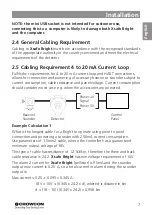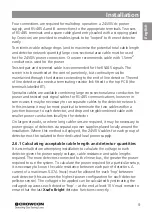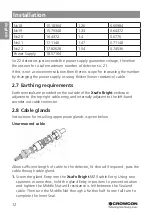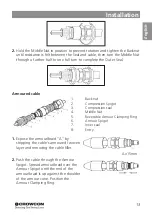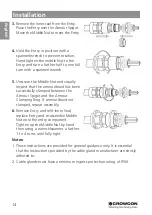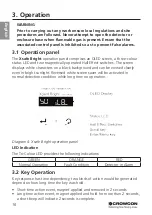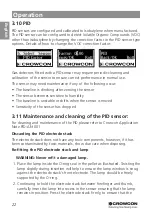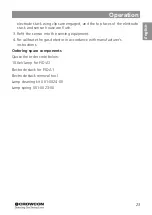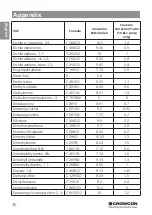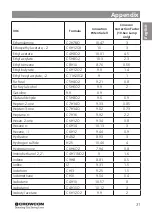
Operation
20
English
If the calibration was successful the success symbol will be displayed and
return to the main menu.
3.7 Routine maintenance
Warning: prior to carrying out any work ensure local regulations
and site procedures are followed. Ensure the associated control
panel is inhibited so as to prevent false alarms.
Service and maintenance work should be carried out by Crowcon, an
approved service centre or by suitably qualified and trained personnel.
Site practices and conditions will dictate the frequency with which detectors
are tested and calibrated. Crowcon recommends that detectors are gas tested
at least every 6 months and re-calibrated as necessary.
Do not use damaged components or damaged electrochemical cells.
The sinter should be inspected regularly, and replaced if it has become
contaminated. A blocked sinter may prevent gas from reaching the sensor.
Ensure that the sensor retainer and junction box lid O-rings are present and in
good condition in order to maintain the ingress protection of the product.
3.8 Sensor replacement
The operational life of sensors depends on the application and amount of gas
to which the sensor has been exposed. Under normal conditions (6 monthly
calibration with periodic exposure to test gas) the typical life expectancy of
sensors is as follows:
• Oxygen sensors: 2 years.
• Electrochemical toxic gas sensors: 2-3 years.
• PID sensors 2 years.
• IR sensors: 10+ years.
Please note:
if the sensor is subjected to a direct water jet, it should be gas
tested in order to ensure correct operation is maintained.


